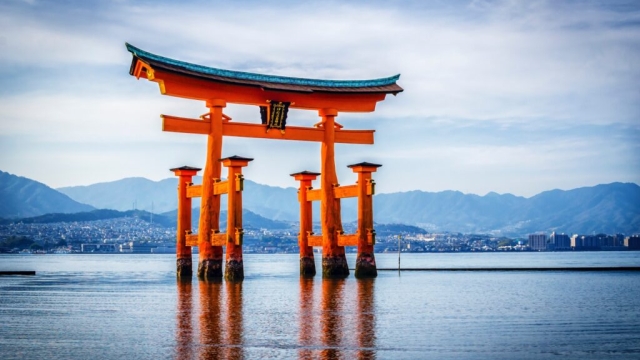
Japan is a land steeped in rich traditions and spiritual practices, where the past resonates in the present. Among its most captivating features are the Shinto shrines, sacred spaces that have been cherished for centuries. These shrines, with their vibrant torii gates and serene surroundings, invite visitors to explore the deep connection between nature, spirituality, and community.
Shinto, the indigenous faith of Japan, is reflected in the architecture and rituals performed at these shrines. Each site tells a unique story, steeped in local legends and cultural significance. As we journey through the enchanting world of Shinto shrines in Japan, we uncover the whispers of the ancients, echoing the beliefs and practices that have shaped the hearts of the Japanese people. Whether nestled in tranquil forests or perched atop misty mountains, each shrine offers a glimpse into a timeless world where nature and divinity harmoniously coexist.
Historical Significance
Shinto shrines in Japan are not merely places of worship; they are steeped in history and cultural significance that date back to ancient times. The origins of Shinto, as a belief system and practice, can be traced to the religious traditions of the Japanese people before the influence of Buddhism. As such, these shrines serve as a tangible connection to Japan’s past, embodying the spiritual and natural elements revered by the indigenous population. They reflect the harmonious relationship between the people and the kami, or spirits, that inhabit the world around them.
The architectural styles of Shinto shrines, with their distinctive torii gates and thatched roofs, have evolved over centuries, representing various historical periods and influences. The preservation of these structures allows historians and scholars to study the development of Japanese religious practices and societal values throughout time. Notable shrines, such as Ise Jingu and Meiji Jingu, highlight significant historical events and figures, linking contemporary practices with the rich tapestry of Japan’s heritage.
In addition to their religious importance, Shinto shrines in Japan play a crucial role in local communities. They serve as venues for festivals, rituals, and gatherings that strengthen communal bonds. Many shrines have been recognized as important cultural properties, and their maintenance and preservation are crucial in ensuring that future generations can experience and appreciate Japan’s unique spiritual landscape. The historical significance of these shrines thus extends beyond their physical presence, embodying the collective identity and continuity of the Japanese people.
Architectural Wonders
The architecture of Shinto shrines in Japan is a breathtaking blend of simplicity and elegance, often reflecting the natural surroundings they inhabit. Built primarily of wood, these structures showcase traditional Japanese building techniques that have been refined over centuries. Each shrine is unique, yet they share common features such as sliding doors (fusuma), tatami flooring, and thatched or tiled roofs that gracefully curve upwards. This harmony with nature is not just aesthetic; it symbolizes the deep-rooted beliefs of Shinto, where the divine is woven into the fabric of the natural world.
One of the most iconic elements of Shinto shrines in Japan is the torii gate, which marks the boundary between the sacred and the profane. These gates are typically painted vermilion, representing protection and safe passage to the divine. Approaching a shrine, visitors often feel a sense of transition as they pass through the torii, leaving the mundane world behind. The intricate carvings and detailed craftsmanship seen on many torii gates reflect the dedication and artistry of their builders, embodying the spiritual significance of the structure.
Noteworthy shrines like Ise Jingu and Fushimi Inari Taisha feature architectural styles that have been meticulously preserved over generations. Ise Jingu, which is dedicated to the sun goddess Amaterasu, is renowned for its unique practice of rebuilding the shrine every 20 years, ensuring that the architecture remains in line with ancient traditions. Meanwhile, Fushimi Inari Taisha, famous for its thousands of vibrant torii gates, invites visitors to explore a labyrinth of trails that ascend the sacred Mt. Inari. These remarkable structures not only serve as places of worship but also as testimonies to Japan’s rich cultural heritage.
Spiritual Practices
Shinto shrines in Japan serve as vital centers for various spiritual practices that reverberate through ancient traditions. Visitors and worshippers engage in a range of rituals to honor the kami, the divine spirits that inhabit natural elements and ancestors. One common practice is the purification ritual, known as misogi, where individuals cleanse themselves by washing their hands and mouth at a chozuya, or purification fountain, before approaching the shrine’s main hall. This act symbolizes the removal of impurities and a prepared heart to receive the blessings of the kami.
Another important practice at Shinto shrines is the offering of prayers and gifts. Worshippers often present rice, sake, or seasonal flowers at the altar as a token of respect and gratitude. These offerings are believed to please the kami, fostering a connection between the spiritual and earthly realms. Festivals, or matsuri, throughout the year provide communal opportunities for people to come together, celebrate, and actively participate in these spiritual offerings, reinforcing community bonds and cultural heritage.
Additionally, the practice of omikuji, or fortune-telling strips, enhances visitors’ spiritual experiences at shrines. Those seeking guidance can draw a random piece of paper that predicts their fortune for the year. Depending on the outcome, individuals may choose to tie their omikuji to a tree or a designated area at the shrine, leaving behind their worries and embracing hope for the future. This blend of personal reflection and communal tradition underscores the dynamic nature of spiritual practices within the sacred spaces of Shinto shrines in Japan.
神社めぐり
Cultural Impact
Shinto shrines in Japan serve as a profound reflection of the country’s cultural identity and spiritual heritage. These sacred spaces are not merely places of worship; they are integral to Japan’s history, traditions, and communal life. The architecture of Shinto shrines, often characterized by their exquisite wooden structures and vibrant torii gates, encapsulates the aesthetic values of Japanese craftsmanship, harmonizing seamlessly with the natural landscapes that surround them. This connection to nature is a cornerstone of Shinto beliefs, reinforcing the significance of the physical environment in spiritual practices.
Additionally, the festivals and rituals associated with Shinto shrines play a vital role in sustaining Japanese cultural practices and community bonds. Many local festivals, or matsuri, are centered around these shrines and incorporate age-old traditions that have been passed down through generations. These events not only celebrate the deities worshipped there but also serve to strengthen social ties within communities, fostering a sense of belonging and collective identity among participants. Such gatherings highlight the dynamic relationship between the people and their faith, encouraging cultural continuity.
Moreover, Shinto shrines have increasingly attracted global interest, contributing to Japan’s cultural diplomacy and tourism. Visitors from around the world come to experience the tranquility and beauty of these sites, allowing for a cross-cultural exchange that broadens understanding and appreciation of Japanese traditions. This influx has sparked discussions about heritage preservation and the balance between modernization and cultural integrity. As guardians of ancient beliefs, Shinto shrines continue to influence contemporary Japanese culture, intertwining the past with the present and inviting future generations to engage with their rich spiritual legacy.


